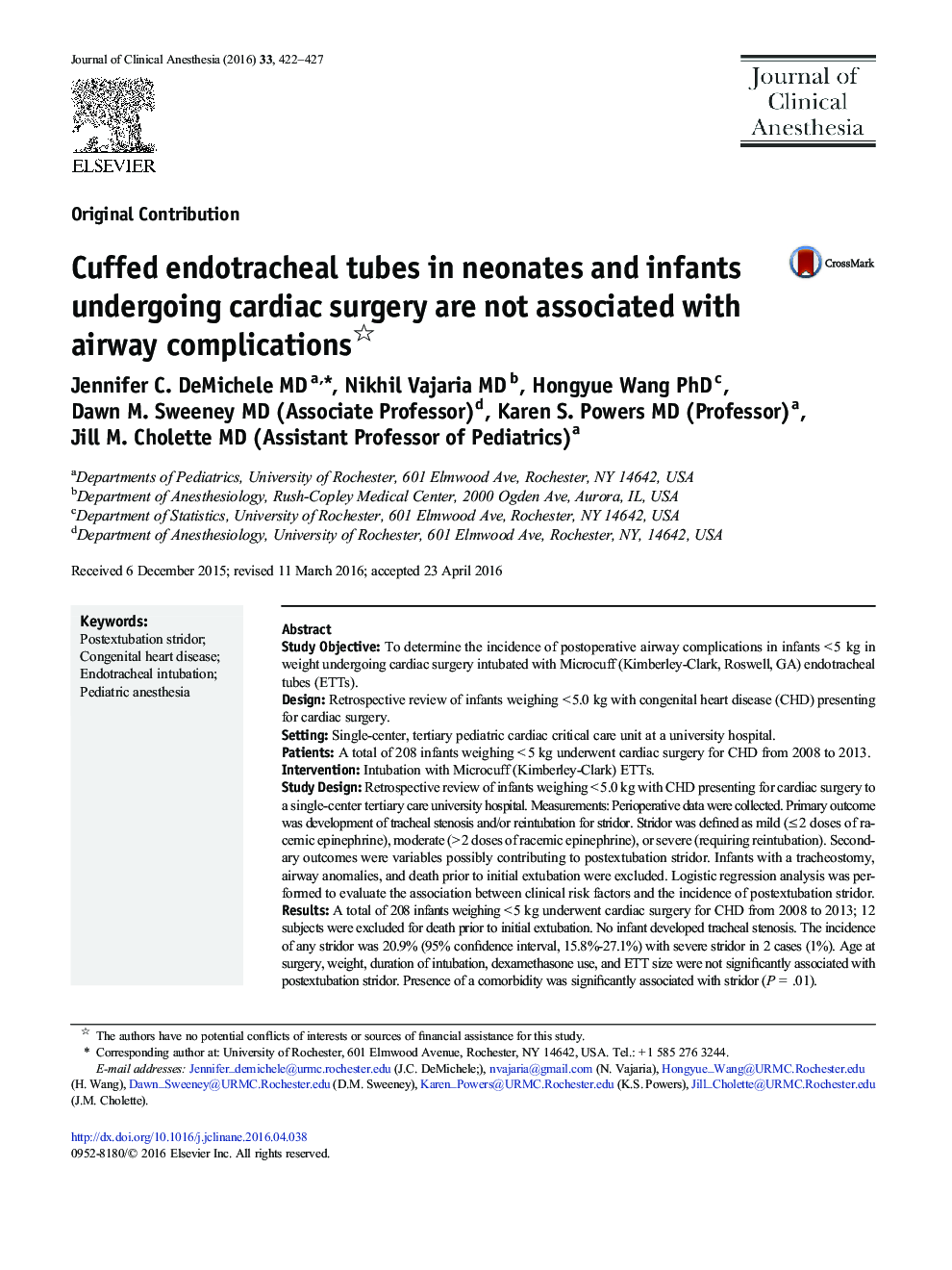| Article ID | Journal | Published Year | Pages | File Type |
|---|---|---|---|---|
| 2762131 | Journal of Clinical Anesthesia | 2016 | 6 Pages |
•Cuffed ETTs allow for improved control of ventilation and oxygenation.•Incidence of postextubation stridor with cuffed ETTs is low in infants undergoing surgery for CHD.•Microcuffed ETT use is safe in infants with CHD undergoing surgical repair.•Comorbidities and not ETT type may contribute to risk of postextubation stridor.
Study ObjectiveTo determine the incidence of postoperative airway complications in infants < 5 kg in weight undergoing cardiac surgery intubated with Microcuff (Kimberley-Clark, Roswell, GA) endotracheal tubes (ETTs).DesignRetrospective review of infants weighing < 5.0 kg with congenital heart disease (CHD) presenting for cardiac surgery.SettingSingle-center, tertiary pediatric cardiac critical care unit at a university hospital.PatientsA total of 208 infants weighing < 5 kg underwent cardiac surgery for CHD from 2008 to 2013.InterventionIntubation with Microcuff (Kimberley-Clark) ETTs.Study DesignRetrospective review of infants weighing < 5.0 kg with CHD presenting for cardiac surgery to a single-center tertiary care university hospital. Measurements: Perioperative data were collected. Primary outcome was development of tracheal stenosis and/or reintubation for stridor. Stridor was defined as mild (≤ 2 doses of racemic epinephrine), moderate (> 2 doses of racemic epinephrine), or severe (requiring reintubation). Secondary outcomes were variables possibly contributing to postextubation stridor. Infants with a tracheostomy, airway anomalies, and death prior to initial extubation were excluded. Logistic regression analysis was performed to evaluate the association between clinical risk factors and the incidence of postextubation stridor.ResultsA total of 208 infants weighing < 5 kg underwent cardiac surgery for CHD from 2008 to 2013; 12 subjects were excluded for death prior to initial extubation. No infant developed tracheal stenosis. The incidence of any stridor was 20.9% (95% confidence interval, 15.8%-27.1%) with severe stridor in 2 cases (1%). Age at surgery, weight, duration of intubation, dexamethasone use, and ETT size were not significantly associated with postextubation stridor. Presence of a comorbidity was significantly associated with stridor (P = .01).ConclusionsMicrocuff ETTs in infants < 5.0 kg in weight undergoing cardiac surgery are associated with a low incidence of severe postextubation stridor. Because cuffed ETTs allow for improved control of ventilation/oxygenation and decreased risk of aspiration, they should be considered for use in this high-risk population. Larger studies are needed to confirm these results.
